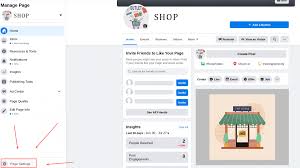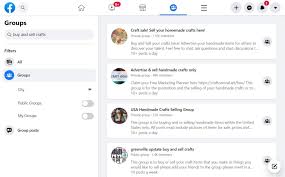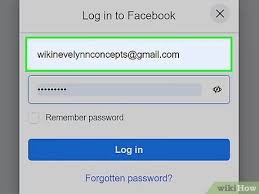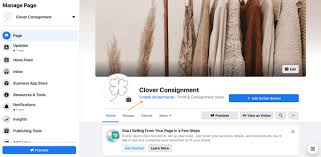
Facebook, launched in 2004 through Mark Zuckerberg and his college roommates, has evolved from a simple social networking site for Harvard students into a global platform with billions of users. From start designed to help people connect and share personal updates, it now provides a wide range of features, including Groups, Events, Pages, and Marketplace.
There are numbers of methos and ways to sell products and promote them on the platforms. Businesses and entrepreneurs can leverage Facebook’s extensive user base to sell products and services. Through creating a business Page, companies can showcase their offerings, engage with potential customers, and run targeted advertisement to reach particular audience.
In this blog, We’ll provide you all the complete guideline about how to sell on Facebook, that will helps all the beginners to stat selling on Facebook.
Initial Guide Before to start Selling on Facebook Platform
Before starting to sell on Facebook, this is important to lay a strong foundation through understanding the planform and preparing your business for online sales.
Selling on Facebook is involves you to know all the crucial tips and ways that all the merchant would requirements for selling digital via Facebook platform. One more Essential tip for sellers, good communication skills and customers satisfaction is the key aspect of successful product selling on this platform and must check your selling online platform or ecommerce platform must be attached with Facebook marketplace in manners.
Below are some crucial point that you must follow them:
- Familiarize yourself with Facebook business tools.
- Before starting, You must readout all the polices, term and condition of Facebook marketplace.
- You must be eligible to sell on Facebook marketplace platform in any of these countries.
- For your website, you must have accurate URLs.
- Lastly, research your competitors and industry trends to stay informed about market demands and pricing strategies.
Ways to Sell On Facebook Understanding
Ads on Facebook were least, however with a boost in the ecommerce sector, the creators of Meta have hopped on to trend and give below ways to sell on Facebook. Facebook provides numerous methods for selling products and services, every catering to various kinds of businesses and strategies.
Below are an overview of the main ways to sell on Facebook:
1. Facebook Business Page

A Facebook businesses page is the foundation for selling on the platform. This permit businesses to present their brand, share updates, and interest with customers. By the page, businesses can list products, promote them, and develop a community of followers.
Features: Product catalog, customer reviews, direct messaging.
Use Cases: Ideal for branding, engaging with customers, and promoting products or services.
2. Facebook Shops

Facebook shops gives a customizable online storefront that integrates with both Facebook and Instagram, allowing businesses to display and sell products directly by their pages.
Features: Product collections, direct checkout, customization choices, and integration with extremal e-commerce platform.
Use Cases: Best for businesses looking to develop a comprehensive e-commerce experience on social media.
3. Facebook Marketplace

Facebook marketplace is a platform where individuals and businesses can list products for local buyers. it is a straightforward way to sell items without the need for a business page.
Features: Localized listings, direct communication with buyers, and category-based search choices.
4. Facebook buy and Sell Groups

Buy and sell groups are community-driven groups where members can post item for sale. These groups are usually focused on particular niches.
Features: Group policy for transaction, direct member communication, and community-based trust.
Use Cases: Great for reaching niche markets or local buyers by community driven engagement.
5. Facebook Ads

Facebook provides a number of various paid ad choices ranging from boosting posts to targeting people with videos and images based on their personal demographics. Ads on Facebook in the only method to gain or to reach new people that would not have get your site otherwise.
By using Facebook Ads, businesses can make targeted advertising campaigns to promote products or services. Ads can be directed to a business page, external website, or particular product listings.
Features: Advanced targeting choices, different ad format as image, video, carousel, and detailed analytics.
Use Cases: Effective for reaching a wider audience, driving traffic to a website, or boosting product visibility.
Above each method provide unique benefits and can be used alone to maximize sales potential on Facebook. Through understanding these options, businesses can select the best approach based on their goals, target audience, and resources.
How to Set-Up a Facebook business page
Creating a Facebook business page is an important step for businesses looking to building a appearance on the platform. It provide you to connect with customers, promote products or services, and utilize Facebook business tools.
Here’s a detailed guide on how to set-up a Facebook business page:
1. Step: Log into Your Facebook Account

2. Step: Access the page Creation Tool and Select Page Type

3. Step: Fill Out Page Information

Enter the name of your business, than ensure it reflects brand and is easy to find, select the category also. Click on Continue once you have entered this information.
4. Step: Add Profile and Cover Photo
Cover photo is one of the most prominent picture on your page, therefore you will select a great and represent picture for your brand or business in good manners. For choosing cover picture must keep in mind photo should be clear at all size, and display at 820*312 pixels should be one display, and 640*360 pixels for mobile.
Create Facebook story into Facebook story section, it will helpful for your business. Keep in mind always, the story description should be on truth and don’t use copy paste content.
While after adding all the information for creating business page on Facebook, most important is your audience. On Facebook audience is totally different for your business as an other product selling platforms, so try to tailor the content of your page to the audience you are selling to.
Publish your Post and Explore Page Management Tools
Before promoting your page, create an engaging first post to welcome visitors and gives them with valuable details about your business.
While, invite your personal Facebook friends to like your page for getting initial engagement and also share your page link on another social media platform, your website, and in email newsletters. Access analytics to understand your audience and how they interact with your page and adjust privacy settings, page policy and notifications according to your preferences.
By following these steps, you’ll have a fully set up Facebook business page, ready to engage with customers and promotes your business.
How to Add Products to Facebook
Adding products to Facebook gives businesses to showcase their offerings directly on their Facebook Page, enabling customers to brows, interact with, and buying products without leaving the platform. It can be done by Facebook shops or the shop section on a business page.
Here is a complete guide on how to add products to Facebook:
1. Set-up Facebook Commerce Manager
Before adding products, you need to set-up your business in Commerce Manager, Facebook platform for managing products catalogs and sales.

Access Commerce Manager:
- Go to your Business Page.
- Click on “More” in the top navigation menu and choose ” Commerce Manager.”
Select a Checkout Method:
- Checkout on another website
- Checkout with Facebook or Instagram
- Message to buy
2. Create a Product Catalog

A product catalog is a container that holds details about items you want to sell.
Create a New Catalog:
- In Commerce Manager, click ” Catalogs” and then ” Create Catalog.”
- Name your catalog and select “Create.”
Add your Business Information:
Make sure your business details, such as contact information’s and shipping policies, is complete.
3. Add Products to the Catalog
There are two main ways to add products: manually or by data feeds
Manual Product Addition
Below are step by step manual product addition:
In Commerce Manager, choose your catalog.
Click on “ADD Products” and select ” Add Manually.”
Fill in the need product information
Name: Product title that clearly describes the item.
Description: Detailed product information, including features, particularity, and advantages.
Price: The selling price of the product.
Image: Upload high-quality images (recommended size is 500*500 pixels).
Adding Products Through Data Feed
For businesses with a large inventory, adding products by a data feed is more efficient.
Create a Data Feed Files:
- Prepare a spreadsheet with product detail in columns like as name, description, price, image URL, and availability.
- Save the file in CSV, TSV, OR XML format.
Upload the Data Feed:
- In Commerce Manger, select your catalog.
- Click “Add Products” and Select “Use Data Feeds.”
- Upload the files and map your columns to Facebook product attributes.
- Schedule regular updates to keep the product catalog up to date.
4. Organize Product into Collections
What are the Strategies for Selling on Facebook?
Selling on Facebook can be effective when businesses implement the right strategies to maximize visibility, engagement, and conversation.
Here’s detailed strategies that can help increase your selling efforts on Facebook:
1. Create a Strong Facebook Business Page
A well-optimized Facebook Business Page is the foundation of your sales strategy. Make sure your page has a clear and professional profile picture, typically your logo, and a cover photo that reflects your brand or current promotions. Fill out all relevant sections, including your business description, contact information, and hours of operation. Update your page regularly with engaging content like as product updates, promotions, and industry news to stay your audience engaged.
2. Utilize Marketplace and Facebook
Facebook Shops provide businesses to create a customizable storefront directly on Facebook, where users can browse and purchase products without leaving the platform. To optimize this, make sure your product listing are complete with high-quality images, information descriptions, and competitive pricing. On the other hand, Facebook Marketplace is perfect for reaching a local audience. giving you to list items for sale in your area.
On regularly bases updates your listings to keep them fresh and relevant.
3. Leverage Facebook Ads
Facebook Ads a beneficial and a powerful tool that lets your target particular demographics, interests and behaviors. These Ads use to promote your products, highlight particular offers, or drive traffic to your Facebook Shop or website. Experiments with various ad formats like as carousal ads or collection ads to watch which resonates best with your audience. A/B testing various elements like headlines, image, and calls to action further optimize your ad performance.
4. Interact with Your Audience
Developing a community around your brand is important. Daily engage with your followers through responding to comments and message promptly. Use Facebook live video feature to showcase products, conduct Q&A sessions, or provide behind-the-scene looks at your business. Interacting content not only keeps your current audience engage but also attracts new potential customers by shares and recommendations.
5. Create Promotions and Contents
Exclusive promotions and contents can make excitement around your brand. Provide particular discount, flash sales, or free shipping to incentivize purchases. Content, like as giveaways, can enhance engagement and enhance your reach, especially when participants are needs to like your page, share the post, or tag friends.
6. Join and Participate in Facebook Groups
Joining particular niche Facebook groups related to your business provide you to interact directly with potential customers. While blatant selling is usually discouraged, participating in discussion, offering advise, and subtly sharing your expertise can position you as a trusted authority.
7. Use Reviews and User-Generated Content
Encourage customers to share photos of them using your products, and feature these user-generated content on your page. Positive reviews and testimonials can develop trust and encourage new customers to make purchases. Build up a system to request and highlight customer feedback, further increasing your brand credibility.
Rules/Policies for Selling on Facebook
Meta, the parent company of Facebook, has established strict commerce polices that sellers must adhere to when listing products on Facebook, Instagram and Messenger. These policies ensure that the platform remains safe and complaint with legal standards.
Here are a list of items that are prohibited from being sold on Facebook according to Meta Commerce Policy:
Prohibited Items:
- Adult products and Services
- Alcohol beverage and products related to alcohol sale
- Animals
- Digital Media and Electronic Devices
- Discriminatory Practices
- Drugs and Drug-Related Products
- Gambling
- Hazardous Goods and Materials
- Healthcare Products
- Weapons, Ammunition, and Explosives
- Tobacco Products
- Misleading, Deceptive or Offensive Items
- Currency, Documents and financial Instruments
While, you can’t sell intangible services and products, just sell a physical products or tangible only. Further more keep on your mind the volitation of any policy, in the result your store will be banned from Facebook Selling.
Selling on Facebook with E-Commerce Platforms
There are a many of website hosting platforms that allows options for merging with Facebook. Integrating ecommerce platforms with facebook can significantly increase your selling capabilities through streamlining inventory management, giving advanced analytics, and offering seamless shopping experience for customers.
While, there are different options on the online store platforms to setting it up. But, you can sync up using Facebook through following these key steps:
- Traverse to the Commerce Manager
- Choose the Catalog
- Select ‘add items’ in the data sources
- Choose “use a partner platform.”
Here are ecommerce platform for Selling on Facebook
Shopify
BigCommerce
WooCommerce
Magento
DataCacciques
Quipt
adMixt
Further more if your are using a different platforms to above one, with DataFeedWatch, your will able to interact your products data to Facebook a feed link as a data source for your Facebook Catalog.
How to Sell on Facebook with Shopify
Selling on Facebook by using Shopify is an effective method to reach a broader audience and streamline the online shopping practices. Facebook and Shopify offers many options by which you can sync data and make product listings on Facebook.
Here are the requirements for syncing data and creating product listings on Facebook by Shopify:
- Active Shopify Store
- Make sure your Shopify store is set up and running.
- Facebook Business Account
- You require a Facebook Business Manager account.
- Published Facebook Business Page
- A fully set up and published Business page is need.
- Facebook Commerce Account
- Set up s Facebook Commerce Account by Business Manager.
- Admin Access
- You must have admin access to both the Facebook Page and Shopify store.
- Product Catalog Prepared
- Have your product details, description, prices, and images ready for syncing.
Lastly, ensure compliance with Facebook Commerce policies to avoid any disruption. Regularly updating your product listings and engaging with customers by Facebook Messenger can increase the overall shopping experience and develop customer loyalty.
Through effectively combining Shopify tools with Facebook vast user base, you can create a powerful online selling strategy.
Pros and Cons of Selling on Facebook
Selling on Facebook offers many advantages, however it also comes with some challenges. So, understanding with the pros and cons of Selling on Facebook can guide you decide whether it is the right platform for your business.
Pros of Selling on Facebook
1. Massive User Base
Facebook has over 2.9 billion monthly active users worldwide, allowing a wide audience for you products. This extensive reach enhance the chances of finding potential customers, regardless of your niche.
2. Easy Integration with E-Commerce Platforms
Facebook easily integrates with famous ecommerce platforms like Shopify, WooCommerce, and BigCommerce. This engagement allows you to sync your product catalog, manage inventory, and handle orders seamlessly.
3. Targeted Advertising Facebook
Advertising platform is one of the most benefit in the world. It offers highly informed targeting options, allowing you to reach particular demographics, interests, and behaviors. This precision helps you get your products in front of the right audience, enhancing the likelihood of conversions.
4. Direct Customers Interaction
Facebook gives multiple ways to engage with your customers directly by comments, messages, and reviews. This engagement can develop trust, improve customer satisfaction, and foster loyalty.
5. Cost-Effective Marketing
Creating a Facebook Shop is free, and you can list your products without any upfront cost. Moreover, Facebook Ads can be more affordable compared to traditional advertising, offering better ROI for small and medium businesses.
6. Mobile-Friendly
Shopping experience with a significant portion of users accessing Facebook through mobile devices, the platform ensure thar the shopping experience is optimized for mobile users. This feature caters to the growing trend of mobile commerce.
Community Building
By pages, groups, and Facebook live, businesses can build a community around their brand. Interacting content and regular updates can keep your audience interested and foster a sense of community.
Cons of Selling on Facebook
1. High Competition
The sheer number of businesses on Facebook means competition is intense. Standing out involves continuous effort, creative marketing and sometimes a significant ad spend to make sure visibility.
2. Dependency on Facebook Algorithm
Facebook algorithm determines what content is shown to users, which can impact the visibility of your posts and products. Algorithm changes can lead to decrease organic reach, making it harder to reach your audience without paid promotions.
3. Limited Customization
While Facebook Shops offer some customization. they are relatively limited compared to a standalone ecommerce website. Branding opportunities are less flexible, and you have to adhere to Facebook design and layout guidelines.
4. Policy Restrictions
Facebook has strict commerce policies, and any violation can lead to product removal or account suspensions. Adherence to these policies can sometimes limit what and how you sell.
5. Transaction Fees
Although listing products is free, Facebook charges a transaction fee for each sale made by the platform, which can cut into your profit margins. This fee different through region and type of product sold.
6. Data Control Selling
On Facebook means that you have less control over customer data compared to selling on your website. Facebook retains most of the customer data, which can limit your ability to conduct in-depth customer analysis and retargeting outside of Facebook.
7. Platform Dependence
Relying heavily on Facebook for sales can be risky. Any changes to Facebook policies, algorithms, or platform features can directly effect your business operations and sales.
Conclusion
Selling on Facebook provides access to a large audience, advantage advertising tools, and a mobile-friendly shopping experience, making it a powerful platform for businesses. However, it also comes with challenges like high competition, limited customization, and dependency on Facebook algorithms and policies.
However, the competition on Facebook is fierce, and businesses must continuously innovate to maintain visibility and attract customers. The dependency on Facebook algorithms and policies means that sellers must remain adaptable to change that could affect their reach and ales performance.
Ultimately, Facebook can be a powerful sales channel, but it work best when combined with other marketing and sales efforts, ensuring that businesses do not rely solely on the platform. Through balancing the advantages and challengers, sellers can effectively harness Facebook capabilities to grow their brand and boost sales.
FAQs
How much does it cost to sell on the Facebook marketplace?
Selling on the Facebook Marketplace is generally free for individuals and businesses, with no listing fees or charges to post items. But, if you use Facebook Shops for a more integrated selling experience, Facebook charges a selling fee of 5% per shipment.
This fee covers payment processing, security, and purchase protection, making it a cost-effective option compared to other online marketplaces. The costs can vary based on the products and services you use, but overall, the platform offers a budget-friendly way to reach a large audience.
How does Facebook Marketplace work?
How can i market my products on Facebook Shop?
To market your products on Facebook Shop, you can use different strategies.
Start through optimizing your product listings with clear descriptions, high-quality images, and competitive pricing.
Utilize Facebook Ads to target specific demographic, interests, and behaviors to reach potential customers effectively.
Regularly post interact content on your Facebook Page, such as promotions, customer testimonials, and product updates, to keep your audience interested.
Leverage Facebook Live to showcase your products in real-time and interact directly with viewers.





